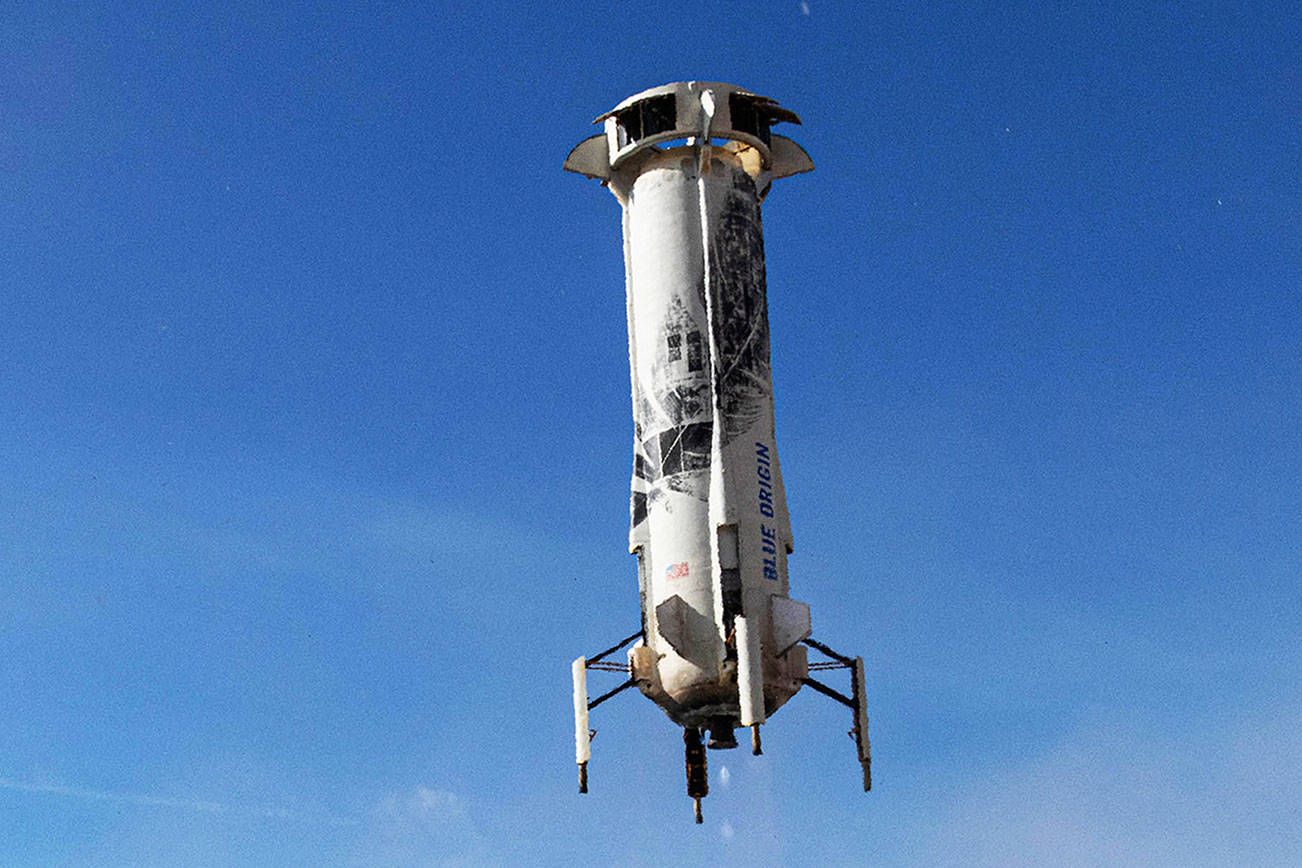The New Shepard booster lands after this vehicle’s sixth consecutive flight on Dec. 11, 2019.
Kent-based Blue Origin’s next New Shepard mission (NS-13) is currently targeting liftoff for 8 a.m. Thursday, Sept. 24, from its Texas launch site.
Current weather conditions are favorable, according to a Tuesday email from Blue Origin. This will be the 13th New Shepard mission and the seventh consecutive flight for this particular vehicle (a record), demonstrating its operational reusability.
Blue Origin, owned by Amazon founder Jeff Bezos, opened in Kent in 2000. The company opened a new headquarters in January along 76th Avenue South, and is expected to employ more than 4,000 by the end of the year, according to city of Kent officials. The company is one of several working with NASA to return American astronauts to the Moon in 2024.
New Shepard will fly 12 commercial payloads to space and back on this mission, including the Deorbit, Descent, and Landing Sensor Demonstration with NASA’s Space Technology Mission Directorate under a Tipping Point partnership. This is the first payload to fly mounted on the exterior of a New Shepard booster rather than inside the capsule, opening the door to a wide range of future high-altitude sensing, sampling, and exposure payloads.
The lunar landing sensor demo will test precision landing technologies for future missions to the Moon in support of the Artemis program. The experiment will verify how these technologies (sensors, computers, and algorithms) work together to determine a spacecraft’s location and speed as it approaches the Moon, enabling a vehicle to land autonomously on the lunar surface within 100 meters of a designated point. The technologies could allow future missions—both crewed and robotic—to target landing sites that weren’t possible during the Apollo missions, such as regions with varied terrain near craters. Achieving high accuracy landing will enable long-term lunar exploration and future Mars missions.
This is the first of two flights to test these lunar landing technologies, increasing confidence for successful missions in the Artemis program. NS-13 is part of the risk reduction process to test these types of sensors for future missions.
As a part of NASA’s Artemis Human Landing System program, Blue Origin is also leading the National Team, comprised of Lockheed Martin, Northrop Grumman, and Draper, to develop a Human Landing System to return Americans to the lunar surface. The technology for the Blue Origin Descent Element that takes astronauts to the lunar surface is derived from the autonomous landing capabilities developed for the New Shepard program.
New Shepard has flown more than 100 payloads to space across 10 sequential flights. Payloads on board NS-13 include experiments from Johns Hopkins University Applied Physics Laboratory, Southwest Research Institute, NASA Flight Opportunities, Space Lab Technologies, University of Florida, Space Environment Technologies and mu Space Corp.
Also on board will be tens of thousands of postcards from Blue Origin’s nonprofit, Club for the Future, some of which will include a special NASA Artemis stamp.
All mission crew supporting this launch are exercising strict social distancing and safety measures to mitigate COVID-19 risks to personnel, customers, and surrounding communities.
You can watch the launch live at BlueOrigin.com. The pre-show begins at T-30 minutes and will provide mission details, including a special update from NASA Administrator Jim Bridenstine.
Talk to us
Please share your story tips by emailing editor@kentreporter.com.
To share your opinion for publication, submit a letter through our website https://www.kentreporter.com/submit-letter/. Include your name, address and daytime phone number. (We’ll only publish your name and hometown.) Please keep letters to 300 words or less.

